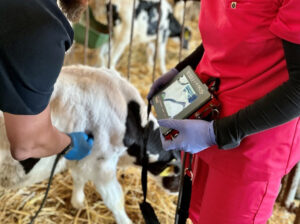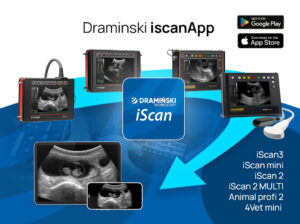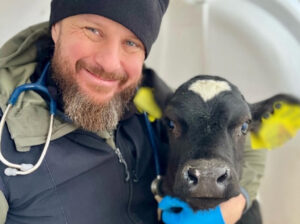The cow’s normal reproductive cycle and ovarian anatomy

Ovarian anatomy
The cow’s two ovaries are located in the abdominal cavity, next to the kidneys. They are responsible for the production of eggs (oocytes) and sex hormones, including oestrogens and progesterone. The ovaries consist of two main parts:
1. the cortex – the outer layer where follicles develop; the follicles contain immature eggs (oocytes) and grow under the influence of gonadotropic hormones
2. the medulla – located in the central part of the ovary, it contains blood vessels, lymphatic vessels and nerves, which supply blood and nutrients to the ovary.
The follicle develops in the ovarian cortex and goes through various stages of growth, starting from the primary follicle, through the growing follicle, to the mature follicle (Graafian follicle), which is ready for ovulation. The follicle contains an oocyte which, under appropriate conditions, matures and gets released during ovulation. After ovulation, the site of the ruptured follicle is converted into the corpus luteum (CL), which produces progesterone, the hormone necessary to maintain pregnancy.
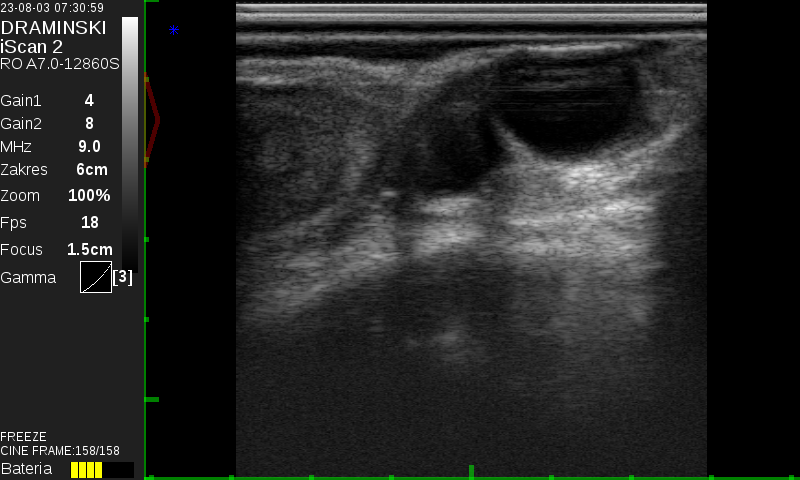
Figure 1 Ovulation follicle
Hormonal changes and their effect on the reproductive cycle
The reproductive cycle of dairy cows is a complex process, strictly regulated by fluctuating levels of hormones, which control both the physiological changes in the reproductive organs and the animal behaviour during oestrus. This process is directed by gonadotropic hormones and oestrogens, whose secretion is controlled by the hypothalamic-pituitary system.
In the first phase of the cycle, under the influence of hormone-releasing hormones (such as luteinizing hormone-releasing factor [LRF]), the pituitary gland begins to secrete luteinising hormone (LH) and follicle-stimulating hormone (FSH). LH plays a key role in inducing ovulation and regulating the follicular growth. FSH, on the other hand, stimulates follicular development in the ovaries, which is a key step in preparing the egg for release.
Oestrogens, mainly estradiol, are secreted by growing ovarian follicles. The level of estradiol increases gradually as the follicles mature, reaching its peak just before ovulation, when it induces changes in the cow’s behaviour (in particular, increased activity, restlessness and standing heat). High levels of estradiol also stimulate changes in the reproductive organs, preparing them to receive sperm and facilitating fertilisation. Just before ovulation, LH rises rapidly, which initiates the rupture of a mature follicle and release of an oocyte (egg cell).
Reproductive and breeding maturity
Before initiating the first insemination, the heifer must undergo sexual maturation. Sexual maturation is a gradual process, and the moment of achieving full breeding maturity that allows for insemination depends on a number of factors. In Holstein-Friesian dairy cows, the optimal age of reaching breeding maturity is typically 12.5–13 months. An important aspect in the assessment of readiness for insemination is also the size of an animal – the heifers that have reached an appropriate height at the withers (132–134 cm) and weight (min 390 kg) have a higher chance of successful insemination. In dairy cows, also the content of fat tissue, which produces substances necessary for hormonal maturation, has a significant effect on the initiation of the maturation process and oestrus cyclicity.
Cow’s oestrus cycle
The cow’s oestrus cycle averages 21 days, but some variability is possible (give or take a few days). Dairy cows belong to polyoestrus animals, which means that their oestrus cycles repeat throughout the year, regardless of the season, until effective insemination. The oestrus cycle is divided into several phases, including ovarian transformation phases and a rest period from sexual activity, which averages 3 days.

Figure 2 Ovary with corpus luteum and 3 follicles
The oestrus cycle phases
1. Oestrus (Day 0–1.5)
Oestrus is a key stage in the sexual cycle. During this time, the estradiol level increases, which is manifested by the following signs of oestrus: increased activity, standing heat and behavioural changes. Typically, insemination is carried out 10–12 hours after the first signs of oestrus have been noticed. The optimal moment for insemination is the presence of a follicle with a diameter of 16–18 mm. If insemination happens at this time, before administration of GnRH, the chance of ovulation and insemination is significantly increased, especially in heifers. In cows on hormonal treatment, ovulation may occur earlier, with a follicle diameter of 12–13 mm.
2. Metaoestrus (Day 1–4)
After insemination, during metaoestrus, natural regression of an unovulated follicle takes place. It is important to monitor the effectiveness of insemination, usually by ultrasound. If the follicle has not ruptured and no ovulation took place, another insemination may be considered.
3. Dioestrus (Day 4–18)
Dioestrus is the most important phase in terms of reproduction. At this time, the corpus luteum (CL) is formed, which plays a key role in maintaining pregnancy. The corpus luteum produces progesterone, the hormone necessary to maintain an early pregnancy. If conception does not occur, the corpus luteum will degenerate and the progesterone level will drop, which will enable initiation of a new cycle.
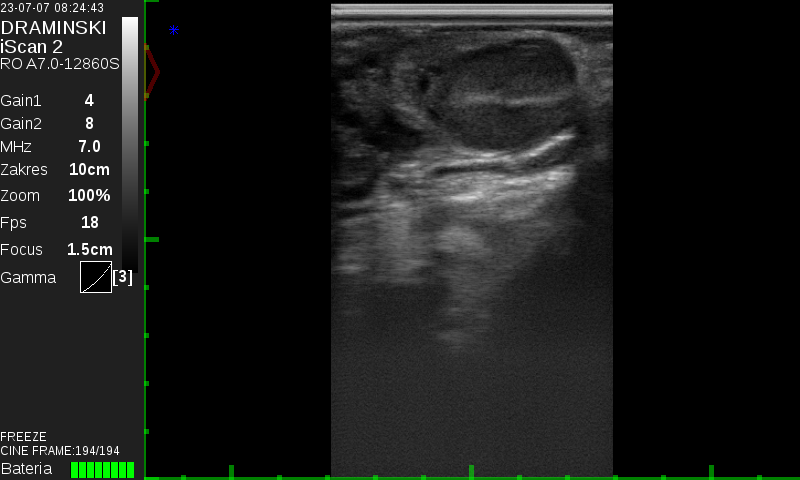
Figure 3 Corpus luteum

DVM, Michał Barczykowski

